असम का राज्य पशु एक सींग वाला गैंडा
असम का राज्य पशु एक सींग वाला गैंडा है। एक सींग वाला गैंडा एक संकटग्रस्त प्रजाति है। भारत में असम में एक सींग वाले गैंडों की सबसे बड़ी आबादी है। दुनिया में एक सींग वाले गैंडों की आबादी लगभग 3000 है। अकेले असम में उनमें से लगभग 2000 हैं।
भारतीय गैंडा, जिसे एक सींग वाले बड़े गैंडे के रूप में भी जाना जाता है, पृथ्वी पर गैंडे की सबसे बड़ी प्रजाति है। नर लगभग तीन टन वजन तक पहुँच सकते हैं और अधिकांश मनुष्यों की तुलना में लम्बे खड़े हो सकते हैं। अपने नाम के अनुरूप, एक सींग वाले गैंडे का केवल एक सींग होता है,
एक सींग वाले गैंडा (राइनोसीरस यूनिकॉर्निस) की त्वचा भूरे या भूरे-भूरे रंग की होती है, जिसमें कई ढीले सिलवटें और ट्यूबरकल होते हैं, जो इसे कवच-प्लेटेड रूप देते हैं। कंधों के आगे और पीछे तथा जाँघों के सामने भारी सिलवटें एक सींग वाले गैंडे की त्वचा को दो विशाल ढालों में विभाजित कर देती हैं। इस गैंडे की एक विशिष्ट विशेषता यह है कि कंधों के सामने की तह पीछे की ओर नहीं बढ़ती है।
गैंडे की कुल पाँच प्रजातियाँ होती हैं- अफ्रीका में सफेद और काले राइनो, एक सींग वाले गैंडे, एशिया में जावा और सुमात्रन गैंडे/राइनो। भारत में केवल एक-सींग वाला गैंडा पाया जाता है। एक-सींग वाला गैंडा (भारतीय गैंडा) राइनो प्रजाति में सबसे बड़ा है। इस गैंडे की पहचान एकल काले सींग और त्वचा के सिलवटों के साथ भूरे रंग से होती है। ये मुख्य रूप से घास, पत्तियों, झाड़ियों और पेड़ों की शाखाओं, फल तथा जलीय पौधे की चराई (Graze) करते हैं। गैंडे की यह प्रजाति इंडो-नेपाल के तराई क्षेत्र, उत्तरी पश्चिम बंगाल और असम तक सीमित है। भारत में गैंडे मुख्य रूप से असम, पश्चिम बंगाल और उत्तर प्रदेश में पाए जाते हैं। असम में चार संरक्षित क्षेत्रों (पोबितोरा वन्यजीव अभयारण्य, राजीव गांधी ओरंग नेशनल पार्क, काज़ीरंगा नेशनल पार्क और मानस राष्ट्रीय उद्यान) में 2,640 गैंडे हैं। इनमें से लगभग 2,400 गैंडे काज़ीरंगा नेशनल पार्क और टाइगर रिज़र्व (Kaziranga National Park and Tiger Reserve) में हैं।
भारतीय गैंडे प्रकृति में अकेले रहते हैं, नर आक्रामक रूप से क्षेत्रीय नहीं होते हैं और उनकी घरेलू सीमाएँ अक्सर ओवरलैप होती हैं। वे लोटने या चरने के लिए प्रमुख स्थानों पर भी इकट्ठा होंगे। गैंडों के लिए लोटना एक महत्वपूर्ण गतिविधि है - वे उथले मिट्टी के तालाब ढूंढते हैं और अपनी त्वचा को मिट्टी की सुरक्षात्मक परत में ढकने के लिए चारों ओर लोटते हैं। यह उन्हें दिन के सबसे गर्म घंटों के दौरान ठंडा रहने में मदद करता है, काटने वाले कीड़ों को दूर रखता है और संभावित रूप से यूवी किरणों को भी रोकता है। भारतीय गैंडे आमतौर पर सुबह और देर शाम के दौरान भोजन करते हैं, जब तापमान ठंडा होता है।
बड़े एक सींग वाले गैंडों की प्रजनन क्षमता धीमी होती है, जो उनके आकार के स्तनधारियों के लिए विशिष्ट है। मादाएं लगभग 15 से 16 महीने तक गर्भधारण करती हैं और अपने बछड़ों को कम से कम डेढ़ साल तक अकेले पालती हैं। कई संभावित साझेदारों वाली एक स्वस्थ मादा गैंडा हर दो से तीन साल में एक बछड़े को जन्म देगी ।
अन्य गैंडों की तरह, भारतीय गैंडे की दृष्टि कमजोर होती है और इसके बजाय वह सुनने और सूंघने की अपनी बेहतर इंद्रियों पर निर्भर रहता है। भारतीय गैंडे महान तैराक होते हैं और बिना किसी परेशानी के नदियों को पार कर सकते हैं। यह उन्हें अफ़्रीकी गैंडों से अलग करता है, जो तैर नहीं सकते।
English Translate
State Animal of Assam One Horned Rhinoceros
The state animal of Assam is the one-horned rhinoceros. The one-horned rhinoceros is an endangered species. Assam has the largest population of one-horned rhinoceros in India. The population of one-horned rhinoceros in the world is around 3000. There are about 2000 of them in Assam alone.
The Indian rhinoceros, also known as the greater one-horned rhinoceros, is the largest species of rhinoceros on Earth. Males can reach a weight of nearly three tons and stand taller than most humans. True to its name, the one-horned rhinoceros has only one horn,
The skin of a one-horned rhinoceros (Rhinoceros unicornis) is brown or grayish-brown, with numerous loose folds and tubercles, giving it an armour-plated appearance. Heavy folds on the front and back of the shoulders and on the front of the thighs divide the one-horned rhinoceros' skin into two huge shields. A distinctive feature of this rhinoceros is that the fold in front of the shoulders does not extend backward.
There are five species of rhinoceros – the white and black rhinos in Africa, the one-horned rhinoceros, the Javan and Sumatran rhinoceros in Asia. Only the one-horned rhinoceros is found in India. The one-horned rhinoceros (Indian rhinoceros) is the largest of the rhino species. This rhinoceros is identified by its single black horn and brown color with skin folds. They mainly graze on grass, leaves, branches of bushes and trees, fruits and aquatic plants. This species of rhinoceros is limited to the Terai region of Indo-Nepal, northern West Bengal and Assam. In India, rhinos are found mainly in Assam, West Bengal and Uttar Pradesh. There are 2,640 rhinos in four protected areas in Assam (Pobitora Wildlife Sanctuary, Rajiv Gandhi Orang National Park, Kaziranga National Park and Manas National Park). Of these, about 2,400 rhinos are in Kaziranga National Park and Tiger Reserve.
Indian rhinoceros live alone in nature, males are not aggressively territorial and their home ranges often overlap. They will also gather at prime spots to roost or graze. Wallowing is an important activity for rhinos – they find shallow mud ponds and roll around to cover their skin in a protective layer of mud. This helps them stay cool during the hottest hours of the day, keeps out biting insects and potentially even blocks UV rays. Indian rhinoceros usually feed during the early morning and late evening, when temperatures are cooler.
The greater one-horned rhinoceros has a slow reproductive rate, which is typical for mammals of their size. Females gestation for about 15 to 16 months and raise their calves alone for at least a year and a half. A healthy female rhinoceros with multiple potential partners will give birth to one calf every two to three years.
Like other rhinos, the Indian rhinoceros has poor eyesight and instead relies on its superior senses of hearing and smell. Indian rhinos are great swimmers and can cross rivers without any trouble. This distinguishes them from African rhinos, which cannot swim.
भारतीय राज्य के राजकीय पशुओं की सूची || List of State Animals of India ||
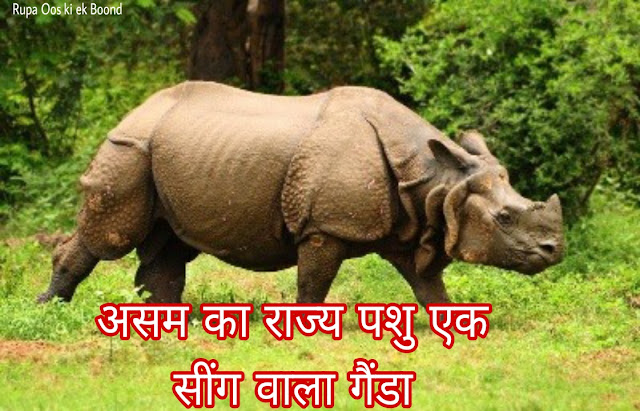
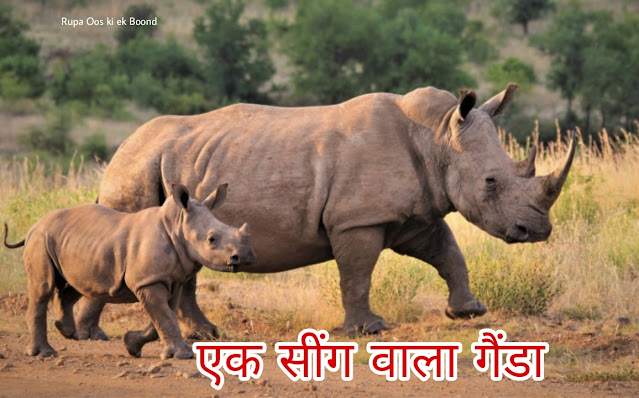

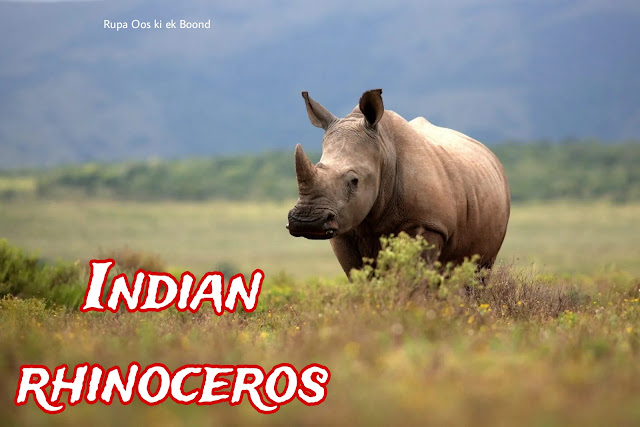
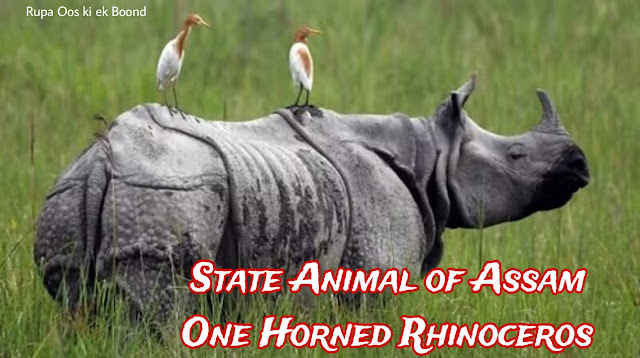

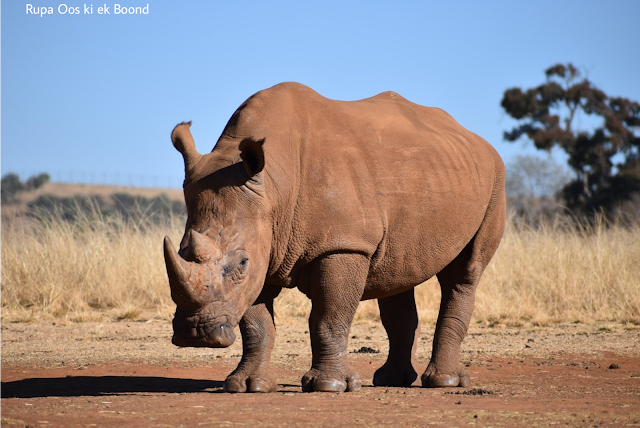

Very interesting and knowledgeable
ReplyDeleteअच्छी जानकारी
ReplyDeleteV nice
ReplyDeleteNice
ReplyDelete🙏🙏💐💐सुप्रभात 🕉️
ReplyDelete🙏जय जय सियाराम 🚩🚩🚩
🙏आप का दिन मंगलमय हो 🙏
🙏जय श्री शनिदेव 🚩🚩🚩
👍👍👍बहुत बढ़िया रोचक जानकारी 🙏
🙏आप का बहुत बहुत धन्यवाद 💐💐
Good information
ReplyDeleteVery nice
ReplyDeleteNice information
ReplyDeleteNice
ReplyDeleteBeautiful.
ReplyDelete